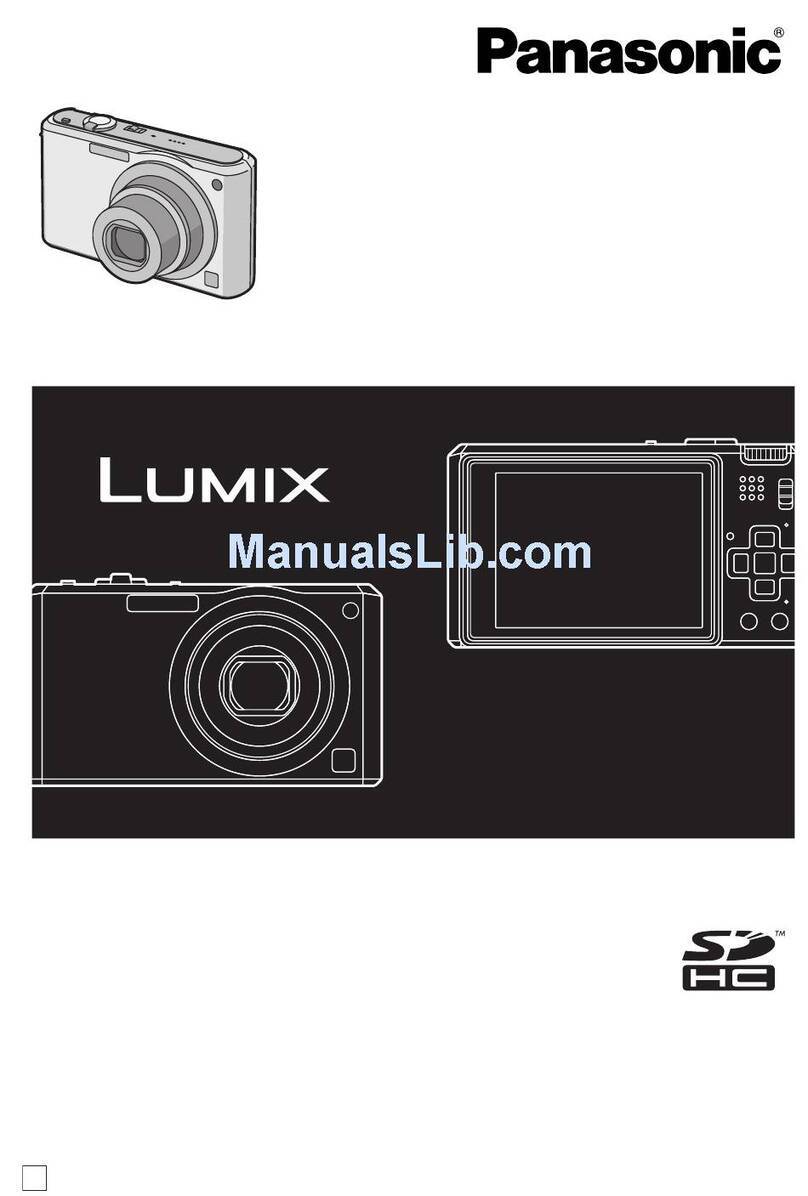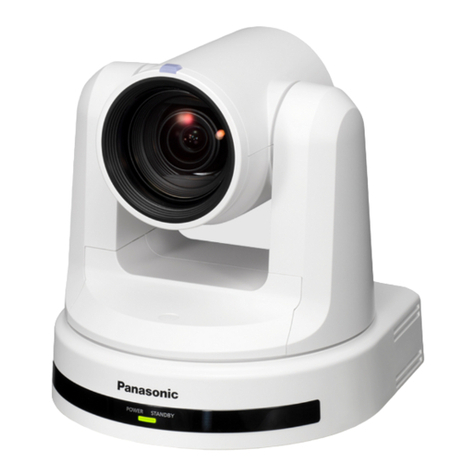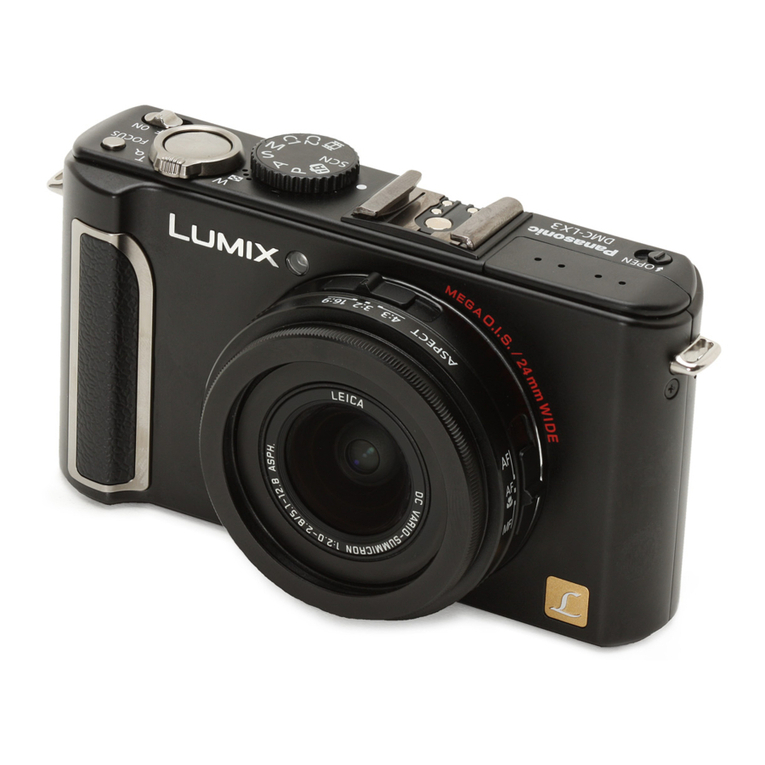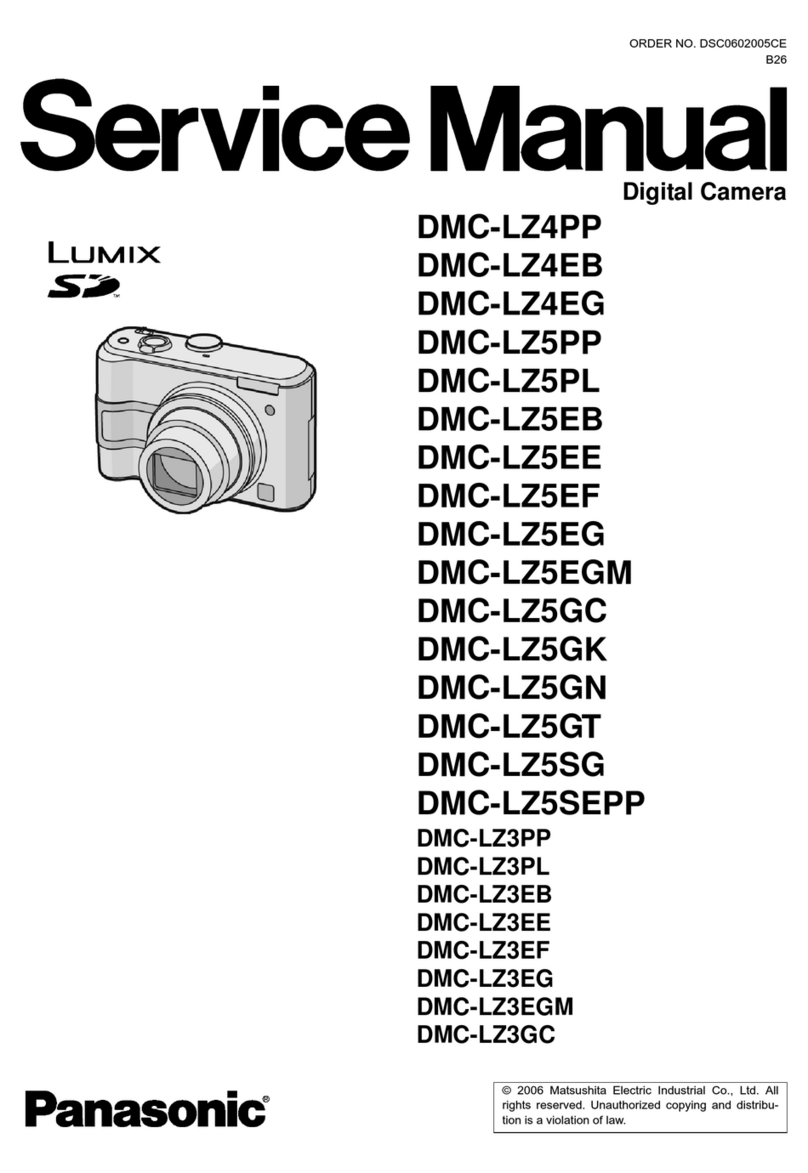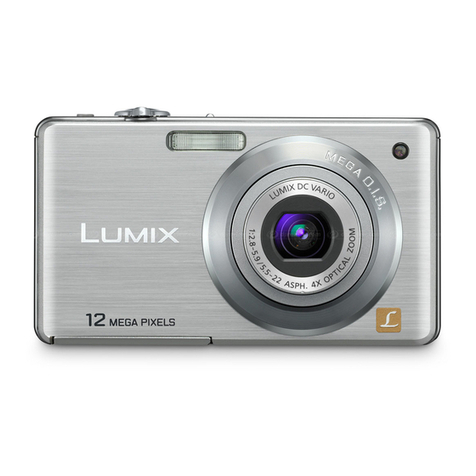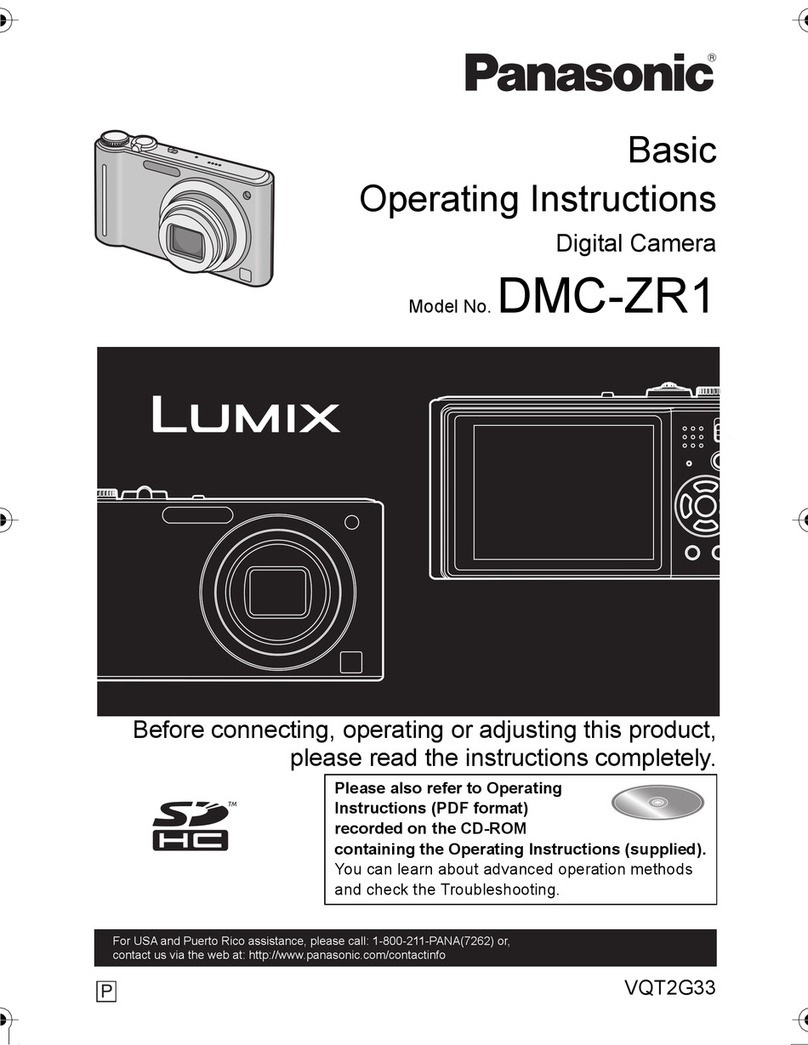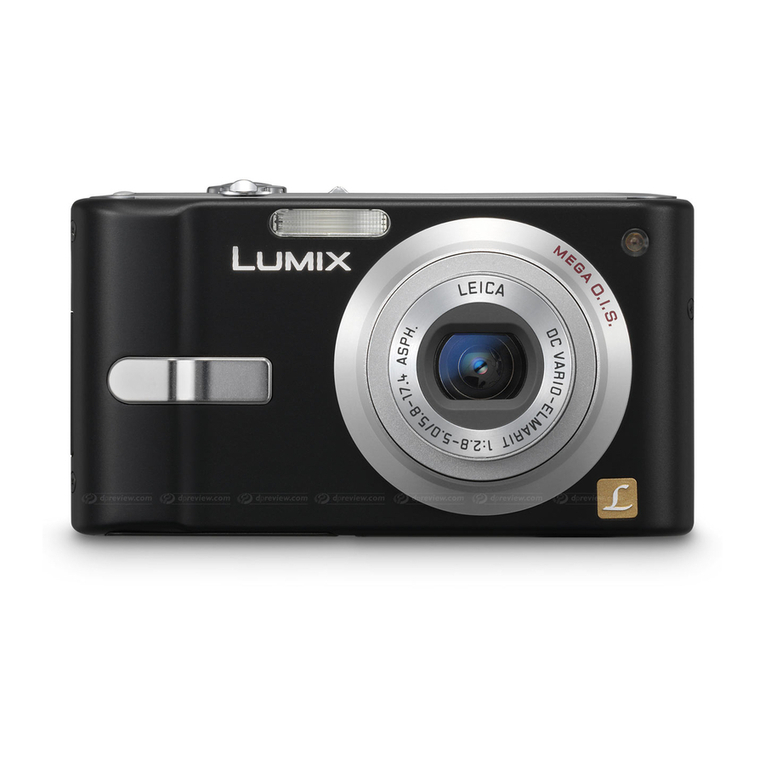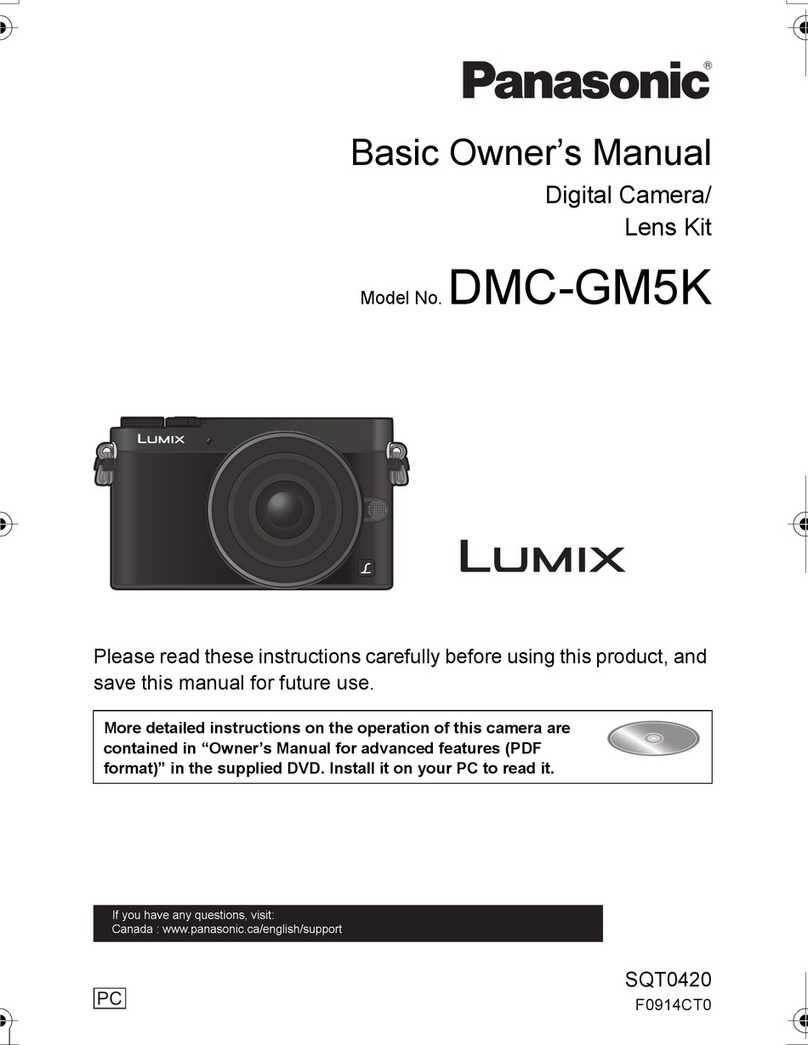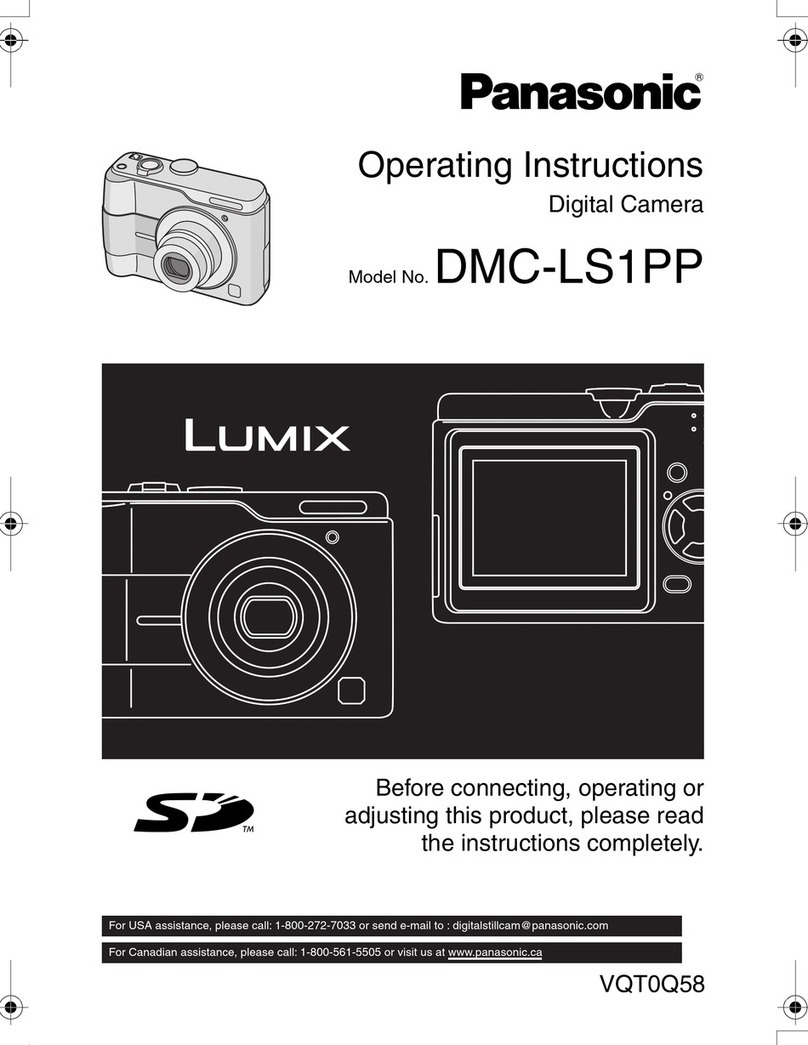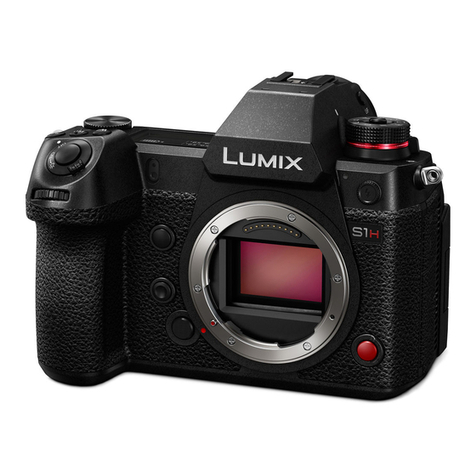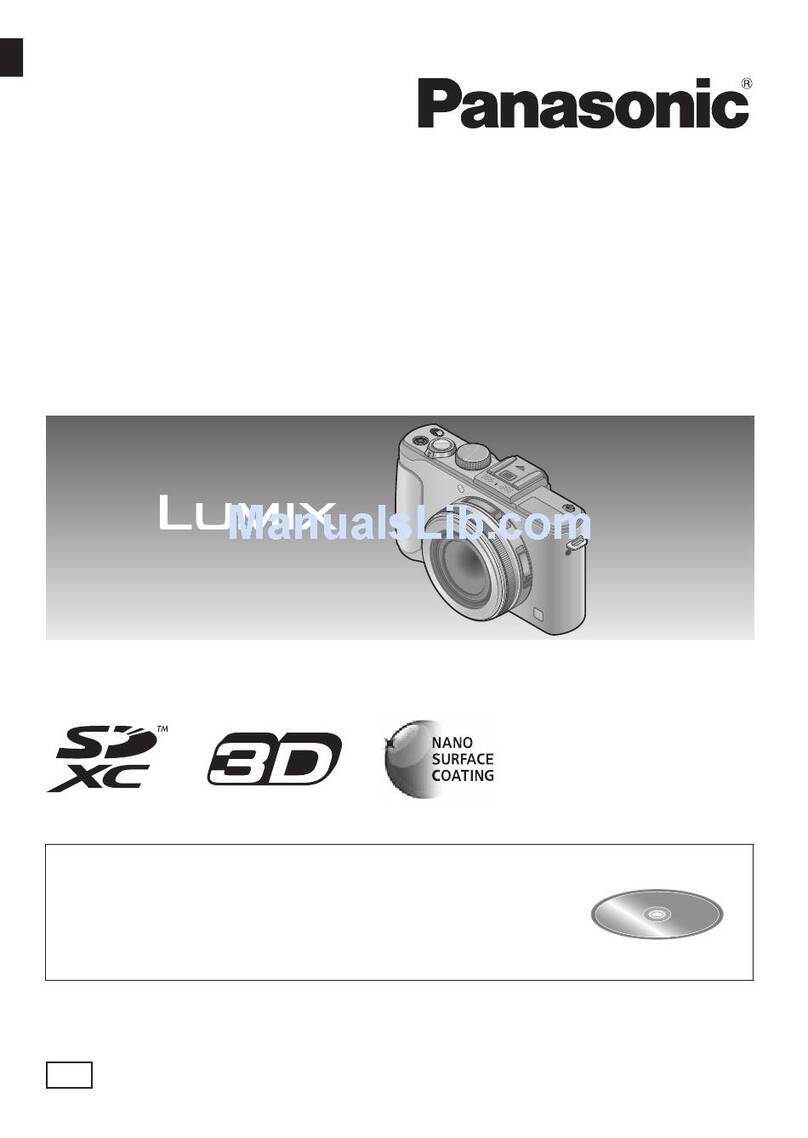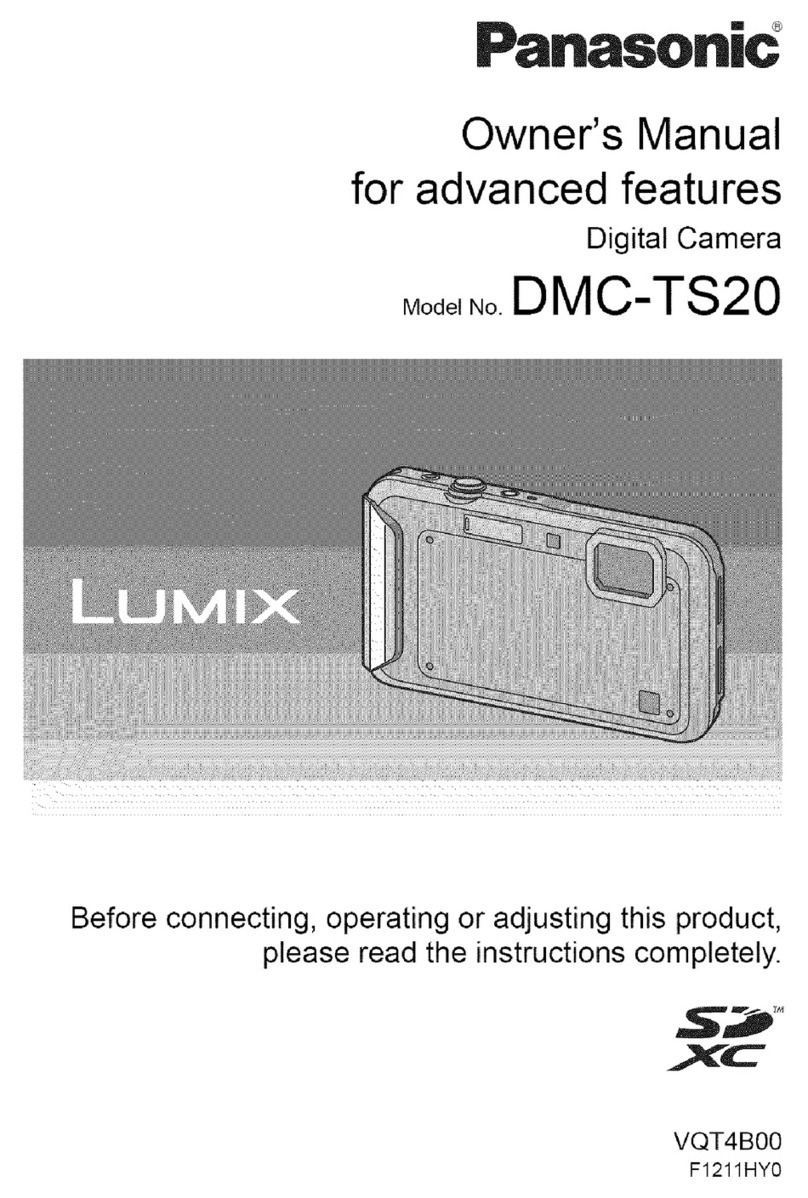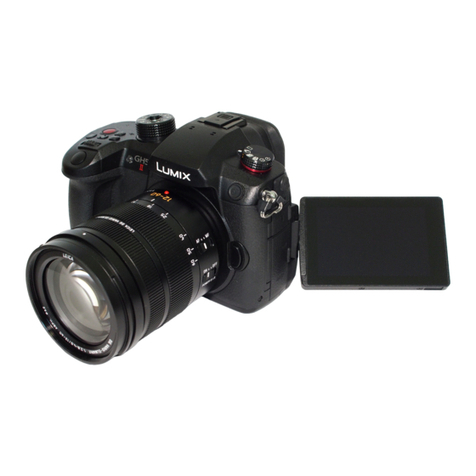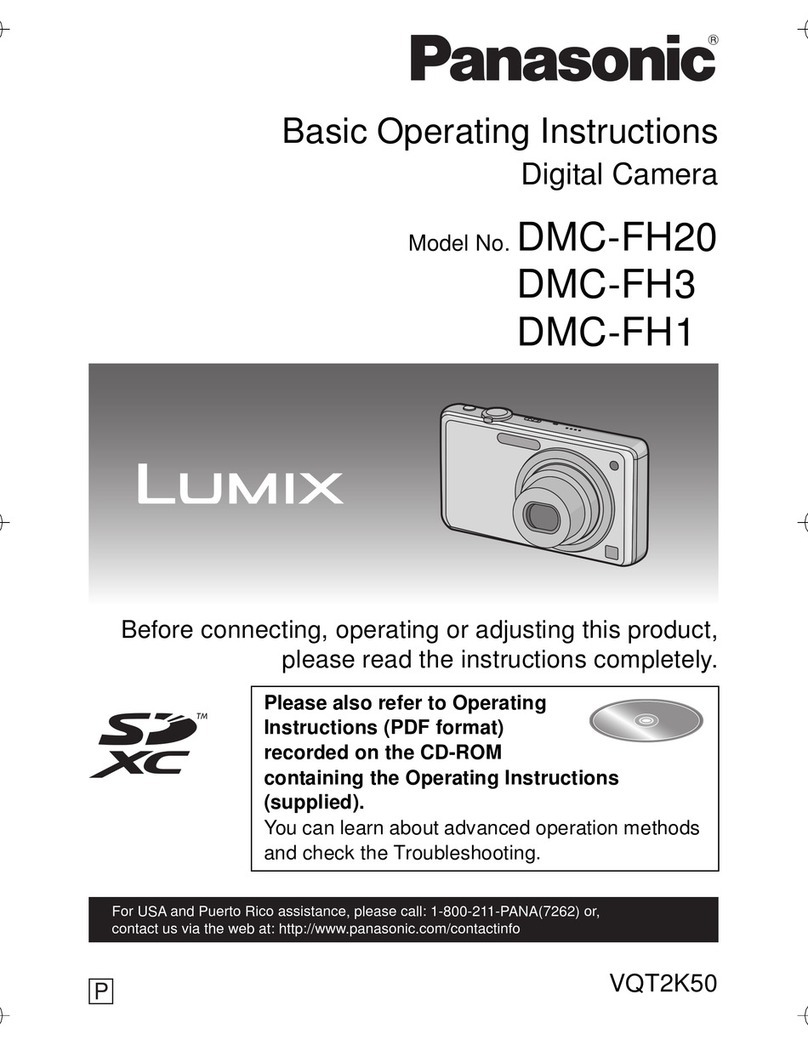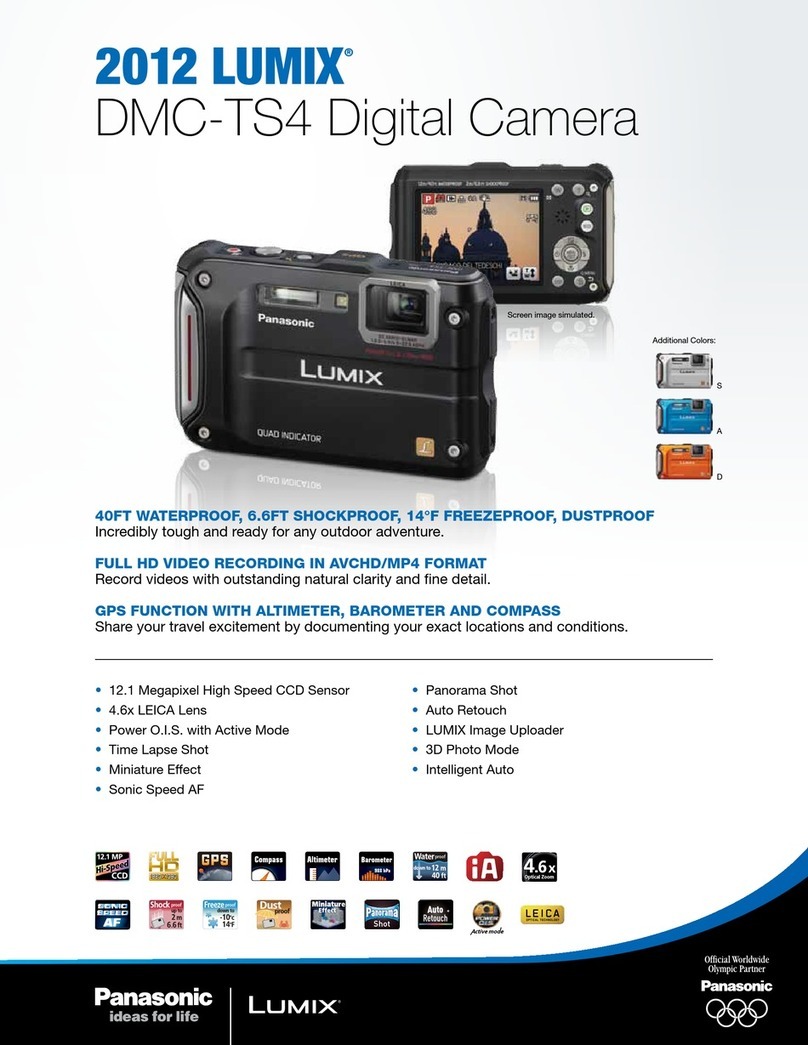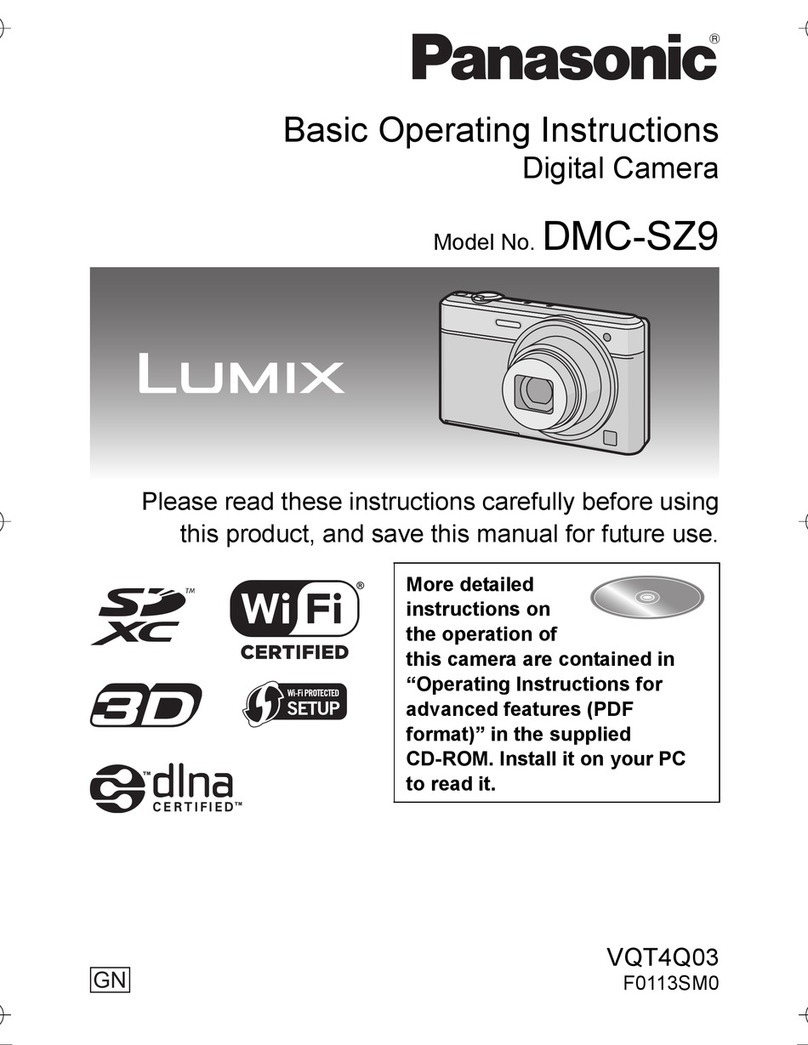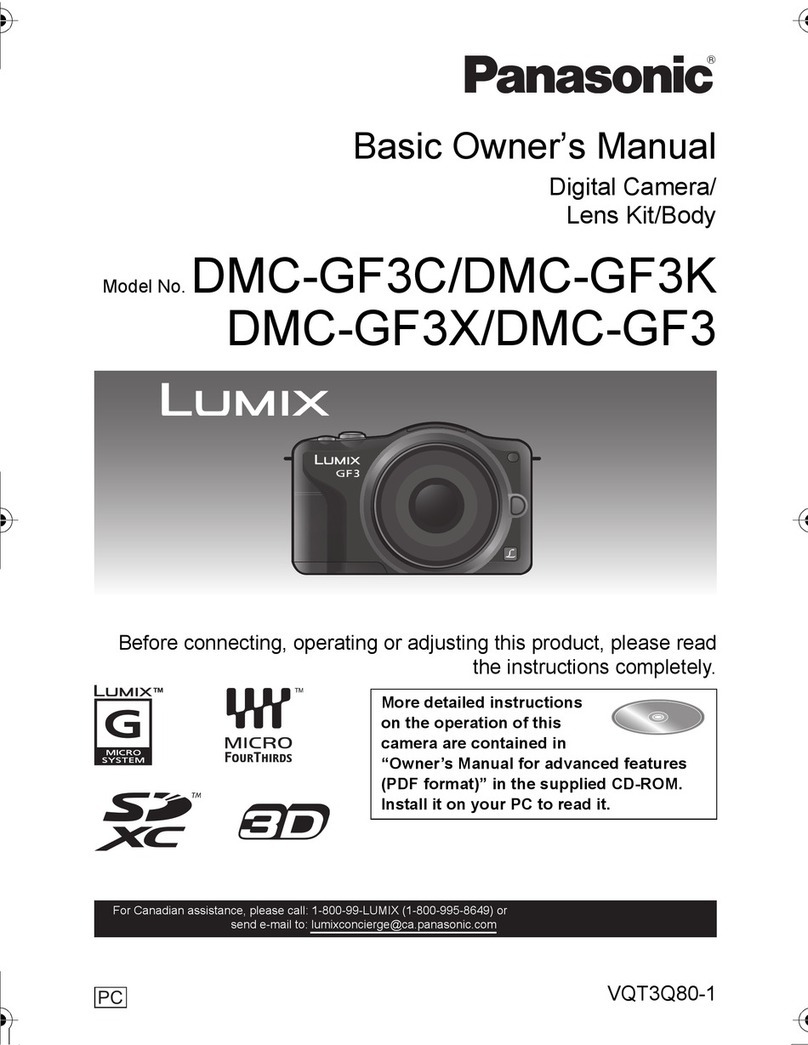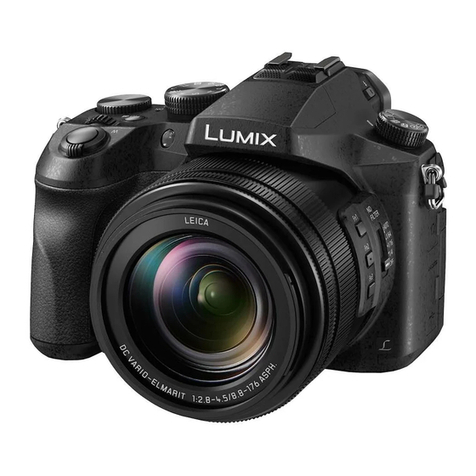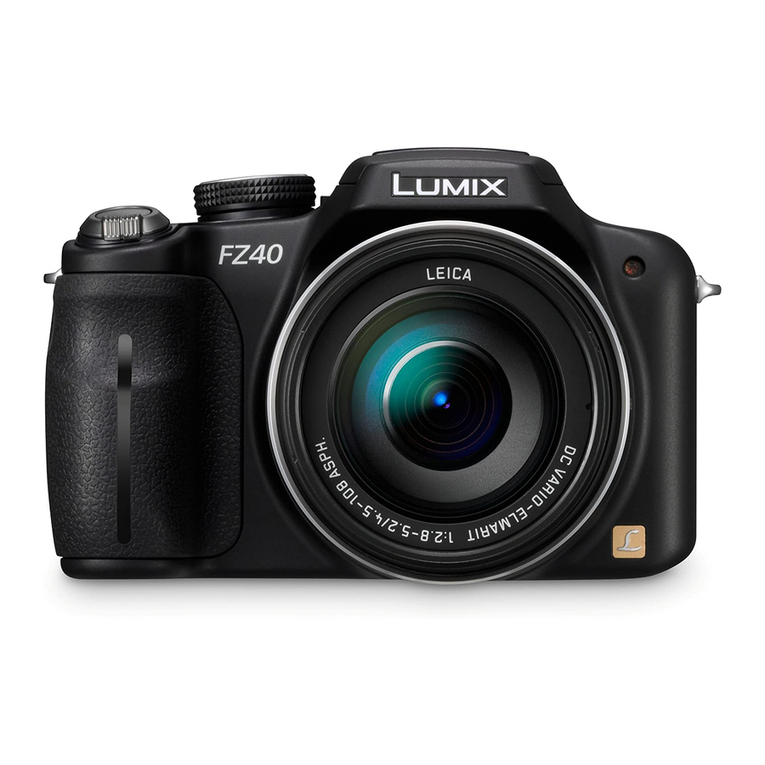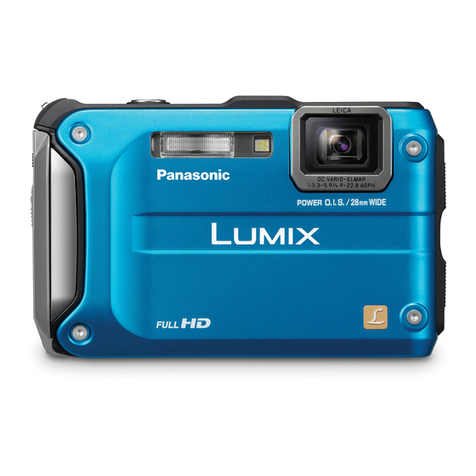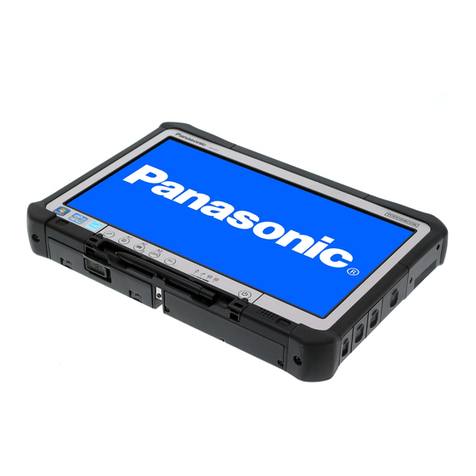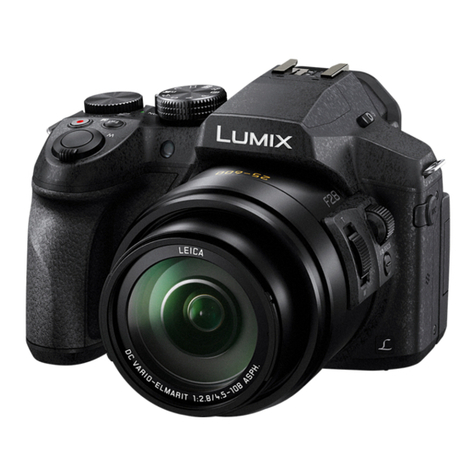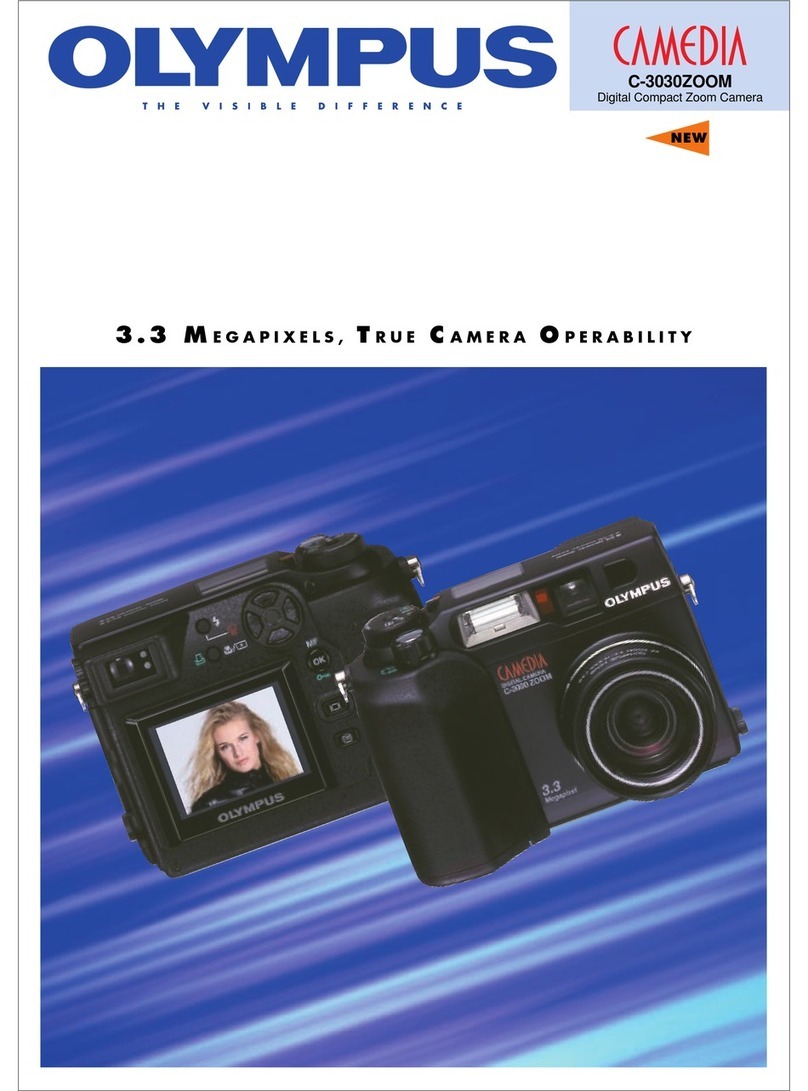4
Contents
Safety
Information for Your Safety................ 2
Preparation
Standard Accessories........................ 5
Names of the Components ................ 6
LCD Monitor Display.......................... 8
Quick Guide..................................... 10
Inserting the Batteries...................... 11
Inserting the Card ............................ 16
Turning ower on/off........................ 18
Attaching the Strap .......................... 19
Using the LCD Monitor..................... 20
Using the Optical Viewfinder............ 21
The Shutter Button
( ressing halfway/ ressing fully)... 21
The Mode Dial.................................. 22
Operating the Menu ......................... 23
Setting the Date/Time (Clock Set) ... 24
Recording images (basic)
Taking ictures ................................ 25
Taking ictures in Simple Mode ...... 27
Checking the Captured icture
(Review) ........................................ 28
Recording Motion Images................ 29
Using the Optical Zoom ................... 30
Using the Digital Zoom..................... 31
Taking ictures using the
Built-in Flash.................................. 32
Taking ictures with the
Self-timer....................................... 34
Recording images (advanced)
Taking ictures with Audio............... 35
Changing the icture Size ............... 36
Changing the Quality
(Data Compression Ratio)............. 37
Taking ictures using
Macro Mode................................... 38
Taking ictures using
ortrait Mode................................. 39
Taking ictures using
Landscape Mode...........................40
Taking ictures using
Night ortrait Mode........................41
Using the Color Effect Mode ............42
Taking ictures using
Spot Mode .....................................43
Compensating the Exposure............44
Taking ictures using Auto
Exposure (AE) Bracket..................45
Using the AF/AE Lock......................46
Adjusting the Color Tone or the
Contrast ( icture Adjustment)........47
Setting the White Balance................48
Setting ISO Sensitivity......................50
Taking ictures using
Burst Mode ....................................51
Playback
laying Back Still ictures................52
laying Back Still ictures
with Audio......................................53
9 Images Multi layback .................. 54
Using the layback Zoom ................ 55
laying Back Motion Images............56
Editing
Deleting Images ...............................57
Writing the rint Information to
the Card (D OF Setting)...............60
rotecting Images on the Card ........63
Technical use
laying Back with Slide Show
(Automatic layback).....................64
Adding Audio to Recorded
ictures (Audio Dubbing)...............66
Resizing Recorded ictures.............67
Trimming Recorded ictures............ 68
Formatting the Card .........................70
Adjusting the LCD Monitor
Brightness......................................71
Using the Auto Review.....................72
Setting up the Operational Sound....73
Setting up the ower Save Mode..... 74
